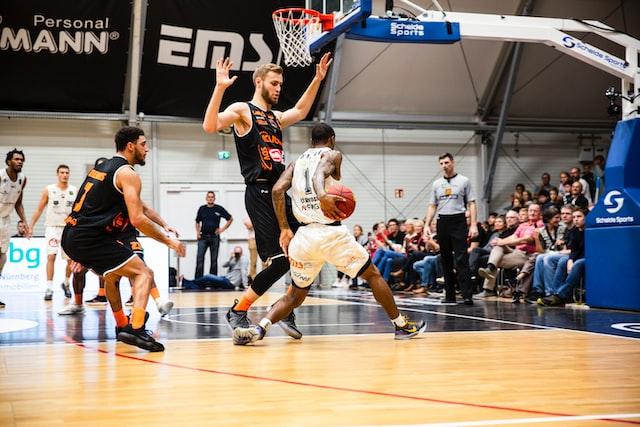Settings for Basketball Photography: An Easy to Understand Guide
Basketball is a fast-paced and high-energy sport, and capturing great photographs of the action requires careful consideration of your camera settings.
From freezing fast-moving players to achieving a desired depth of field, there are several key camera settings that can help you take high-quality photographs of basketball games.
In this article, we’ll explore the importance of shutter speed, aperture, ISO, and focus mode for settings for basketball photography in an easy to understand guide.
Whether you’re a beginner or an experienced photographer, this guide will help you take your basketball photography to the next level.
Table of Contents

Settings for Basketball Photography: Why They Matter
Capturing high-quality photographs of basketball games requires careful consideration of camera settings in order to freeze fast-moving action, capture clear images in low light, and achieve a desired depth of field.
The right settings for basketball photography are sure to help you capture the best images possible, regardless of your skill level.
In basketball photography, using a fast shutter speed can help you freeze the action and capture sharp images of players running, jump, shooting, and passing the ball.
Aperture, on the other hand, can affect the depth of field in your photos, determining how much of the scene is in focus.
ISO determines the sensitivity of your camera’s sensor to light, and can be useful in low light situations.
White balance, finally, can help you ensure that colors in your photos appear accurate and natural.
By understanding and using the right camera settings, you can take control of your photography and create images that accurately and creatively capture the essence of the game.
The Best Settings for Basketball Photography to Use
Here are a few key camera settings that are particularly important for basketball photography:
Shutter Speed: A fast shutter speed is crucial for freezing fast-moving action on the court. A shutter speed of 1/200th of a second or faster will allow you to capture sharp images of players in motion. This is probably the most important of the settings for basketball photography.
Aperture: Choosing the right aperture can help you control the depth of field in your images. A wider aperture (e.g. f/4 or lower) will create a shallow depth of field, which can be useful for isolating a specific player or action in the foreground. On the other hand, a smaller aperture (e.g. f/8 or higher) will give you a greater depth of field, which can be useful for capturing the entire court in focus.
ISO: In low light conditions, you may need to increase the ISO in order to get a properly exposed image. However, be aware that increasing the ISO can also introduce noise into your images. It’s a good idea to find a balance between a low ISO and a fast enough shutter speed to freeze the action.
Focus Mode: Setting your camera to continuous focus can help you track moving players and keep them in focus. It’s also a good idea to use a single focus point rather than multiple focus points, as this can help you maintain focus on the subject more accurately.
- White Balance: Settings you white balance to auto will probably give you the best results. Settings a proper white balance can be very difficult for beginners, so it’s best to let the camera do the work here. You can always adjust the color balance by editing the photos later on.
By adjusting these settings appropriately, you can take high-quality photographs that capture the excitement and intensity of a basketball game.
Additional Resources
Here is an article that is sure to be very helpful for anyone interested in sports photography:
Best Nikon Lenses for Sports Photography
Check out our Gear page to read more articles just like this with up-to-date product reviews for gear across all photography genres.

